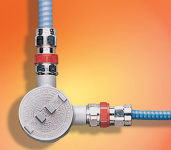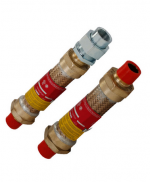I'm looking at some short runs of RMC from a motor to a junction box.
Do 344.30(A) and (B) imply that all runs of RMC must have at least one clamp (even if the run is less than 3')? They seem to...
It seems like very short runs of unsupported rigid were allowed briefly with 344.30(C) which was added in 2008 and then removed in 2011.
Is RMC considered securely mounted when it's threaded into a junction box that's been bolted down? (i.e. the junction box is secure and the conduit is not being used to support the junction box).
Or are there any other sections of code that modify this? Is there any leeway for when flexibility is required? In my case the motor is mounted to a plate that is adjustable. There is a flexible coupling between the motor and junction box.
Do 344.30(A) and (B) imply that all runs of RMC must have at least one clamp (even if the run is less than 3')? They seem to...
It seems like very short runs of unsupported rigid were allowed briefly with 344.30(C) which was added in 2008 and then removed in 2011.
Is RMC considered securely mounted when it's threaded into a junction box that's been bolted down? (i.e. the junction box is secure and the conduit is not being used to support the junction box).
Or are there any other sections of code that modify this? Is there any leeway for when flexibility is required? In my case the motor is mounted to a plate that is adjustable. There is a flexible coupling between the motor and junction box.



